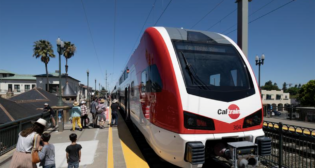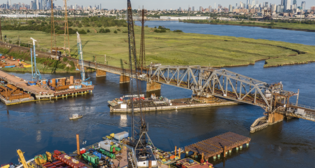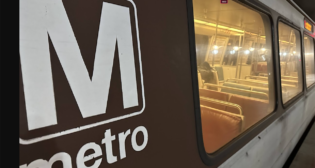
Comeback quickens for North American streetcars
Written by AdministratorStreetcars are returning, possibly to a neighborhood near(er) you, though in both the U.S. and Canada political headwinds may slow their arrival.
Blinded by the bright spotlight (or flame-throwing going back and forth) of debate over U.S. high speed rail proposals, it’s easy for many to miss a U.S. resurgence of passenger rail on a more local, intimate level: streetcars.
Cities that never fully surrendered their streetcar operations—New Orleans and San Francisco come to mind—are now actively pursuing their expansion. Portland, Ore., expanding its leadership rail role established by its successful MAX light rail system, continues to expand its heralded (and complementary) four-mile Portland Streetcar operation, which debuted in July 2001. Tacoma, Wash., already has its modest streetcar (sold originally as “light rail”), while bigger neighbor Seattle, new on the scene in terms of both LRT and streetcars, is actively pursuing expansion of both.
But if “Northwest is Best” for U.S. streetcar growth, the region no longer holds sole sway over a U.S. streetcar future, and rail industry suppliers, including carbuilders, are actively pursuing opportunities nationwide.
Though the list fluctuates with additions and subtractions, seemingly by the week, at press time the list of U.S. cities planning, advancing, constructing, or even operating “true” streetcar lines—as opposed to light rail transit (LRT) rail systems that include street running—include: Atlanta; Charlotte, N.C.; Cincinnati, Dallas; Los Angeles; New Orleans; Portland, Ore. (“of course,” one industry observer stated flatly); St. Louis, Salt Lake City; San Francisco; Seattle and Tacoma, Wash.; Tucson, Ariz., and Washington, D.C., and nearby suburbs (with anywhere from two to four streetcar lines being advanced).
Add Canadian cities such as Toronto (which has ordered 386 Flexity vehicles from Bombardier), Vancouver, and/or Victoria, British Columbia, into the potential mix, and it’s little wonder the streetcar market, slow to develop and still largely under the radar, looks bright.
Local needs breed local support
It’s true, as political analysts note, that many of the federal economic recovery transportation projects backed by the Obama Administration’s TIGER II grant program are in states where the administration’s opponents are rejecting such funds. High speed rail (HSR) and higher-speed rail (HrSR) programs have faltered or fallen under such moves, and such actions are also under way to threaten nascent streetcar development in many places, including Atlanta, Cincinnati, and Salt Lake City. Buoyed by anti-tax governors (some would add: who are also anti-rail), local anti-rail citizens groups have found new political ammunition to resurrect recent unsuccessful campaigns to halt streetcar development. Federal streetcar grants of $47.7 million (for Atlanta) and $26 million (for Salt Lake City) are being questioned. In Cincinnati, federal contributions appear to be secure, but Ohio Gov. John Kasich has moved to withdraw $15 million in state funding already awarded to the city for its $128 million starter streetcar system.
Still, local projects, more than HSR or HrSR, often generate deeper local support precisely because the benefits are more easily envisioned or perceived. Some streetcar projects are also depending in part on local funding. West Sacremento, Calif., taxpayers voted to tax themselves for a streetcar project to tie their downtown to larger neighbor Sacramento and its LRT system—and so voted during the 2008 election, even in the face of (what became known as) the Great Recession.
In Tucson, Ariz., the city plans to augment its proposed 3.9-mile streetcar line, which serves the University of Arizona, with student housing development, in a public/private partnership arrangement, to address a university shortage—and cement a ready ridership base.
Arguments for some new-start streetcar systems often include a favorable price point comparison to larger and more expensive LRT systems. But numerous cities are advancing plans for streetcars in addition to (often existing) LRT lines or heavy-rail rapid transit service, not in lieu of same.
“It is likely that [Portland, Ore.’s] MAX made streetcars easier to understand,” says TriMetr Communications Director Mary Fetsch. “But it also brought new issues into the discussion. For example, there was concern among Northwest neighbors about the size and character of the streetcar. A MAX train would be outsized for street running in that neighborhood which grew up around old streetcars and probably horses and buggies. So there was some challenge drawing the distinction. But on the whole it probably helped quite a bit.”
Sometimes “local” support originates not first from city officials or transit agencies, but from finite neighborhoods. In Dallas, residents of the city’s Oak Cliff section, just south and west of downtown, are acknowledged leaders in driving political momentum to restoring and expanding streetcar options. The non-profit Oak Cliff Transit Authority is making its push even as Dallas Area Rapid Transit pursues its own Downtown Dallas Streetcar project to improve rail access to the central city, and as DART advances plans to link the heritage McKinney Ave. Transit Authority (M-Line) streetcar to DART LRT service.
Streetcar suppliers get proactive
Rolling stock suppliers—old and new—see big potential profits. LRT manufacturers such as Alstom, Bombardier Transportation, and Siemens Mobility are more than eager to modify existing streetcar specifications employed for European and Asian products to fit U.S. Buy America and Americans with Disabililties Act (ADA) needs.
Indeed, Bombardier already is rolling out the first 204 Flexity Outlook light rail vehicles—streetcars in many ways, if not by name—and possibly as many as 386, for Toronto’s “Transit City” program, a program still alive despite political turmoil. Bombardier beat out Siemens Canada for the Toronto orders, but Siemens Mobility, itself a significant force in North American LRT manufacturing, has made clear its Sacramento, Calif., facility is ready to handle streetcar development.
Last month, Bombardier formally announced its PRIMOVE technology, which Bombardier Transportation President Andre Navarri said would allow streetcars and LRT, as well as rubber-tired vehicles, “to operate electrically without catenary, cables, stops, long waits for batteries to recharge and, most important, they will be able to share the same infrastructure.”
But the competitive field is growing. Kinkisharyo International in January literally began taking its show on the road, unveiling its LFX-300 “ameriTRAM” ™ hybrid streetcar in Charlotte, N.C. in January, then moving on to numerous cities such as Dallas and Salt Lake City (RA, October 2010, p. 12). Kinkisharyo says it “has completed engineering tests and trials,” and the hybrid streetcar “is proven ready for the North American market.” The ameriTRAM™, a 100% low-floor streetcar, is powered by e-Brid™, a propulsion technology that enables operation powered by overhead catenary or onboard lithium-ion batteries.
Kinkisharyo says ameriTRAM™ was specifically engineered for North America and complies with the Americans with Disabilities Act, Buy America, NFPA-130, and ASME RT-1.
Then there’s newcomer United Streetcar, LLC, a newly formed subsidiary of Clackamas, Ore.-based Oregon Iron Works touting U.S.-based streetcar manufacturing. The company, perhaps predictably, landed a “hometown” streetcar order from Portland Streetcar for six cars, after supplying an initial prototype (which made its own U.S. tour in 2010, including Austin, Tex., and Cincinnati). But United Streetcar followed up with a seven-car order from Tucson, Ariz., placed last year, to supply that city’s new 3.9-mile streetcar line, expected to open in 2013.
Cost variables in play
Such competitive pursuit of suitors may help cities keep their purchase costs down, even as fiscal pressures mount from other, more antagonistic sources. So, too, might the cost of petroleum products, expected to rise with any global economic recovery, which could dampen prospects for Bus Rapid Transit alternatives, as well as rail options. But for some North American municipalities, a decision favoring streetcar development already appears to have been made.
“We have very frequent visits from all around the world,” says TriMet’s Fetch. “The mayor and half the city council from Seattle recently were here. We’ve hosted people from all over the country, while Portland Streetcar, Inc., and First Stop Portland have hosted [delegations from] Shanghai and Tokyo just since the new year began. We (TriMet) don’t see them all because some meet with just Portland Streetcar, Inc., First Stop Portland, Portland State University, or city of Portland officials. But most of the visits we get to TriMet are interested in both streetcar and MAX.”
As with North American LRT development, doubtless numerous streetcar proposals will be thwarted, delayed, or killed outright by anti-rail forces and/or funding issues. But as with any material product, seeing is believing, and municipalities large and small across North America are more than willing to consider streetcars not as quaint relics, but as part of their 21st century package.



